The "Old Nassau" clock reaction
A clear reaction solution turns orange and then deep blue, with perfect timing.
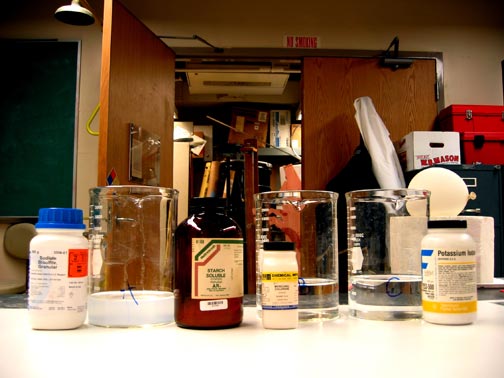
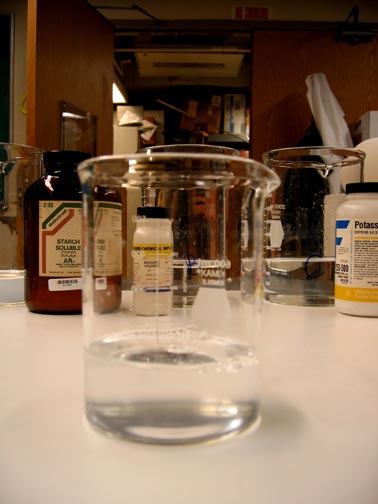
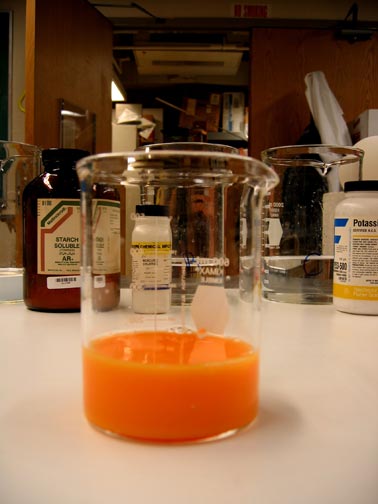
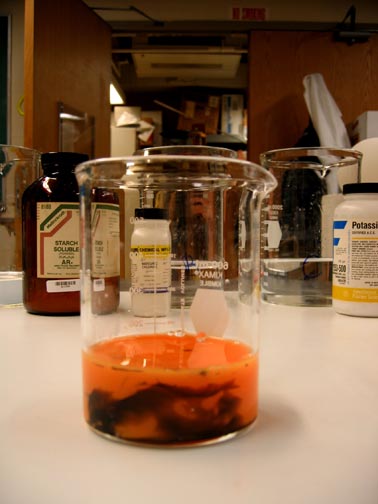
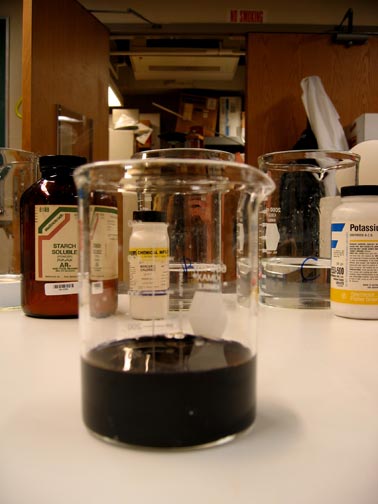
Ingredients: mercuric chloride, potassium iodate, sodium bisulfite, soluble starch
Procedure: A partial recipe follows.
1. Prepare three separate solutions of sodium bisulfite and soluble starch, mercuric chloride, and potassium iodate.
2. Add the solution of mercuric chloride to the solution of sodium bisulfite and soluble starch.
3. Add the solution of potassium iodate and observe the reaction.
Understanding: We begin with an aqueous solution of sodium bisulfite (a source of hydrogen sulfite ions), mercuric chloride (a source of Hg(II) ions), and soluble starch (which will act as an "indicator" of the production of molecular iodine).
When the potassium iodate is added to the solution, hydrogen sulfite ions reduce iodate(V) ions to iodide ions.
IO3-(aq) + 3 HSO3-(aq) → I-(aq) + 3 SO42-(aq) + 3 H+(aq)
The Hg(II) ions in solution combine with iodine ions to create the orange mercury(II) iodide solid.Hg2+(aq) + 2 I-(aq) → HgI2(s) (Orange)
By Le Chatelier's principle, if enough iodide ion is added, the reaction equilibrium will be shifted to the right, leading to the production of mercury(II) iodide precipitate. However, for that reaction to occur the concentration of iodide ions must be large enough that the equilibrium constant for the dissolution of the mercury(II) iodide salt - the solubility product - is exceeded.HgI2(s) → Hg2+(aq) + 2 I-(aq) Ksp = aHg2+ (aI-)2
Orange mercury(II) iodide solid is precipitated until all of the Hg2+ ions are used up (provided that there is an excess of I- ions).Hg2+(aq) + 2 I-(aq) → HgI2(s) (Orange) K = 1/Ksp
If I- and IO3- ions remain in the mixture, the iodide-iodate reaction takes placeIO3-(aq) + 5 I-(aq) + 6 H+(aq) → 3 I2(aq) + 3 H2O(l)
and the blue starch-iodine complex is formed.I2(aq) + starch → complex (Dark Blue)
The combination of the orange mercury(II) iodide and the deep blue starch-iodine complex results in an essentially black solution. Due to the dramatic transition in the color of the solution from orange to black, the reaction is also referred to as the Halloween Reaction.The reaction was discoved in the research of two Princeton undergraduate students. It is referred to as a clock reaction as the time required for the reaction to occur is marked by the dramatic color changes from clear to orange to deep blue. Nassau Hall at Princeton University is a building named for William III, King of England, Prince of Orange and Nassau. The building is also known as Old Nassau.
Through a slight variation in the concentration of one reactant, the clear reaction solution turns orange and then turns clear again.
Ingredients: mercuric chloride, potassium iodate, sodium bisulfite, soluble starch
Procedure: A partial recipe follows.
1. Prepare three separate solutions of sodium bisulfite and soluble starch, mercuric chloride, and potassium iodate.
2. Add the solution of mercuric chloride to the solution of sodium bisulfite and soluble starch.
3. Add the solution of potassium iodate and observe the reaction.
Understanding:
By doubling the concentration of the iodate ion, the equilibrium
IO3-(aq) + 3 HSO3-(aq) → I-(aq) + 3 SO42-(aq) + 3 H+(aq)
HgI2(s) + I-(aq)
→ [HgI3]-(aq)
HgI3-(aq) + I-(aq)
→ [HgI4]2-(aq)
What should be added to the resulting clear solution to cause the orange mercury(II) chloride precipitate to reform?
You can check your answers here.

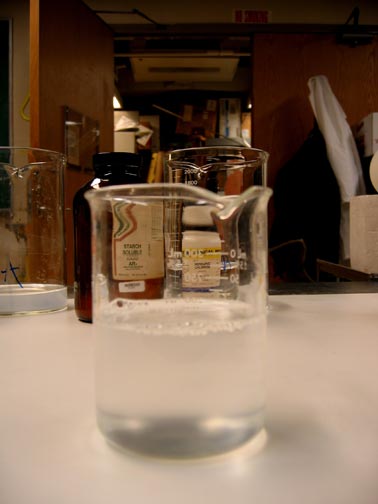
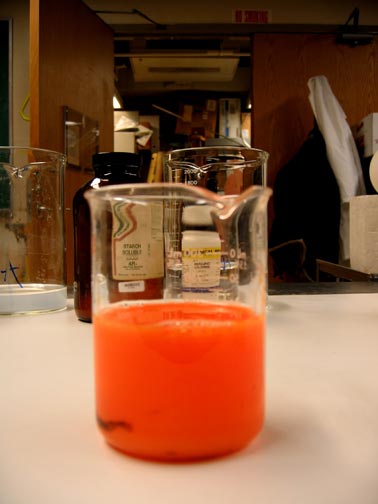
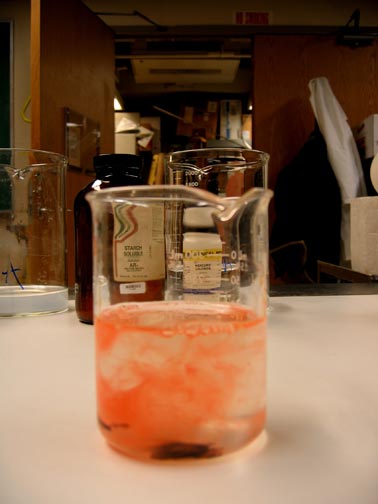
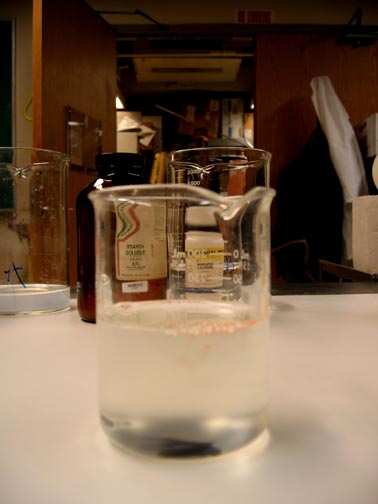
Pushing and pulling the equilibrium
Question:
In the reaction leading to the formation of the tetraiodo mercury(II) complex ion, the mercury(II) chloride forms and then disappears. This result is reminiscent of the "boomerang" reaction involving tartrate, copper ion, and hydrogen peroxide.